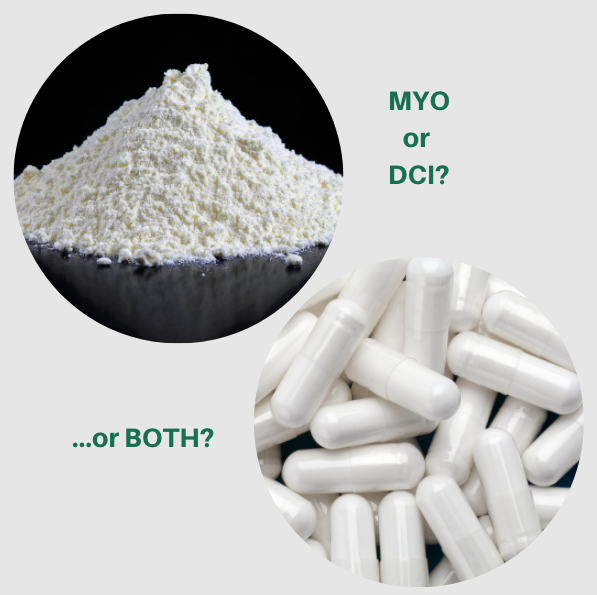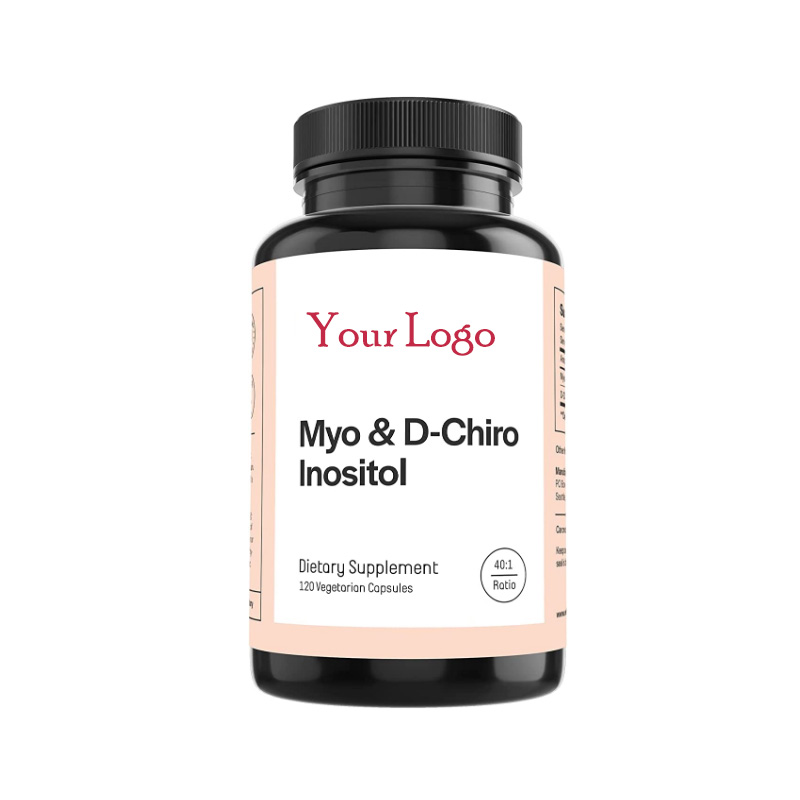Categories
- Blog (60)
D-Chiro-Inositol is a substance commonly used to treat polycystic ovary syndrome (PCOS) that may aid insulin action and help reduce insulin resistance. D-Chiro-Inositol can also help to relieve depression and can help help your liver with fat metabolism. You can find dietary inositol in many types of foods, including fruits, grains, legumes and certain meat products.
D-chiro-Inositol (ie, D-chiro-Inositol, commonly abbreviated as DCI) is a member of the inositol family, although “inositol” includes several biologically active isomers, including L-chiro-inositol. MYO (Myo-inositol) is converted to DCI (D-chiro-inositol) by insulin-dependent NAD/NADH epimerase. It is widely recognized as an important auxiliary messenger in insulin signal transduction. DCI (D-chiro-inositol) accelerates the dephosphorylation of glycogen synthase and pyruvate dehydrogenase, and promotes non-oxidative and oxidative glucose processing by rate-limiting enzymes. DCI (D-chiro-inositol) can reduce insulin resistance due to defective epimerization of Myo-inositol to chiro-inositol, at least partially restoring insulin sensitivity and glucose handling.
Regarding d-chiro-inositol, foreign scholars have found that in addition to the function of inositol to promote liver lipid metabolism, DCI also has insulin sensitization, blood sugar lowering, and special physiological functions of anti-oxidation, anti-aging and anti-inflammatory, especially It is an important discovery to improve ovulation in patients with polycystic ovary syndrome (PCOS).
Myo-inositol, also known as inositol (cyclohexanehexol), is a cyclic carbohydrate with six hydroxyl groups. For a long time, it was considered a B vitamin (vitamin B8). However, it is not considered an essential nutrient because it is formed from glucose. Each kidney makes around 2 g of myo-inositol per day, and the average dietary intake is 0.5–1.0 g/day. The liver and brain also synthesise myo-inositol, although at much lower amounts compared with the kidneys. Importantly, however, in the brain, myo-inositol levels reach concentrations 10-fold to 15-fold greater than that of blood, and there is limited uptake of myo-inositol from systemic circulation.

The choice depends on whether the ingredients are natural ingredients, extracted from natural plants, and the ingredients must be safe and of high quality. Then there is the ratio. In addition to DCI, MI will also be added to the product. In order to improve the effect of polycystic, clinical studies have shown that the mixture of inositol and D-chiro-inositol in a 3.6:1 formula has the best effect. Taking 3- After 6 months, it can significantly improve the regulation of endocrine and glucose and lipid metabolism, and restore the levels of various hormones. For brands, there are not many golden ratios, which will not dazzle everyone. If there is this guarantee, the effect will not be too bad.
Inositol is found naturally in cantaloupe, citrus fruit, and many fiber-rich foods (such as beans, brown rice, corn, sesame seeds, and wheat bran). It is also sold in supplement form and used as a complementary therapy to treat a wide range of medical conditions, including metabolic and mood disorders.
Here, I summarised the natural sources of D Chiro Inositol and we could see some sources that contain higher DCI.
| Source | 100g foods | Source | 100g foods |
| Soy Lecithin | 2100mg | Brown rice | 700mg |
| Chickpeas | 760mg | Wheat germ | 690mg |
| veal and cow liver | 340mg | lentils | 410mg |
| oranges | 210mg | barley | 390mg |
| peas | 160mg | oats | 320mg |
| grapefruit | 150mg | whole wheat flour | 170mg |
| strawberries | 95mg | farinetta | 84.9mg |
| cauliflower | 92mg | beef | 260mg |
D Chiro Inositol normally works as a popular dietary supplement that could be used for human cell health, and it may have the following benefits:
Since chiro-inositol in food contains “L” and “D” configurations, there is no clear meaning for dietary supplements, which is why purification and modification are required.
It is worth mentioning that the blood Myo to DCI ratio of non-polycystic women is 40:1, while the blood DCI of polycystic women is only 1/2 of that of healthy women.
On the other hand, the ratio of Myo to DCI in the follicular fluid of non-polycystic women is 100:1, while that of polycystic women is only 0.2:1, i.e. lack of Myo.
This is a statistical statistic, but it may vary from person to person, which is why I advocate personalizing Myo and DCI.
The research conclusions are also contradictory. Some believe that 40:1 supplementation is better, while others point out that the 3.6:1 model is more beneficial.
But what is certain is that no matter what the ratio is, it is difficult to quantify through dietary supplements, so different inositol supplements appear.
For polycystic girls who really don’t want to eat nutrients, I would recommend eating more whole grains. All foods rich in phytic acid are good sources of inositol.

Best Nutras is working with both D-Chiro Inositol, Myo-Inositol raw materials, and also dietary supplements for PCOS treatment, welcome to send us your inquiry at [email protected] for more details.